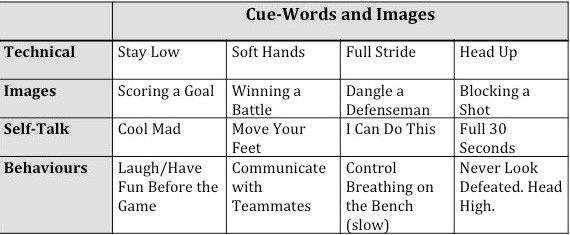Dental hygiene is crucial for our furry friends, and yet it often gets overlooked in their overall care routine. Taking care of your dog’s teeth is not only important for their oral health, but it can also have a significant impact on their overall well-being. Neglecting your dog’s dental health can lead to a range of problems, including bad breath, tooth decay, gum disease, and even systemic issues affecting their organs.
In this comprehensive article about taking care of your dog’s teeth for a healthy smile, we will delve into the various aspects of canine dental care and provide you with practical tips and advice to ensure that your furry companion enjoys optimal oral health. From understanding the importance of regular teeth cleaning to exploring effective home remedies and products for maintaining dental hygiene, we have got you covered.
The Importance of a Healthy Smile for Your Furry Friend
As dog owners, we often focus on our pets’ physical health, ensuring they receive proper nutrition and exercise. However, one aspect of their well-being that is often overlooked is their dental health. Just like humans, dogs can suffer from a range of dental issues such as cavities, gum disease, and tooth loss. A healthy smile is not only aesthetically pleasing but also vital for their overall health and quality of life.
Proper dental care for dogs goes beyond just freshening their breath or preventing unsightly plaque buildup. It plays a crucial role in preventing potentially serious health problems down the line. Dental disease in dogs has been linked to various systemic conditions such as heart disease, kidney damage, and even infections that can spread throughout the body. By maintaining your furry friend’s oral hygiene, you are not only promoting a radiant smile but also safeguarding their overall well-being.
Imagine the joy on your dog’s face when they have a healthy mouth free from pain and discomfort! A healthy smile means they can enjoy their favorite treats without hesitation or struggle while eating. It allows them to greet you with enthusiasm through wagging tails and slobbery kisses without any inhibitions. Furthermore, maintaining good dental hygiene can lead to increased longevity for your beloved pet—meaning more years filled with happiness and companionship.
The Hidden Dangers of Neglecting Your Dog’s Dental Health
While it may be easy to overlook your dog’s dental health, neglecting it can have far-reaching consequences for their overall well-being. Just like humans, dogs can suffer from a wide range of dental issues if their teeth are not properly cared for. One of the most common dangers is periodontal disease, which affects a staggering 80% of dogs by the age of three.
Periodontal disease occurs when plaque and tartar build-up on your dog’s teeth, leading to inflammation and infection in the gums. If left untreated, this condition can result in pain, tooth loss, and even damage to vital organs such as the heart and kidneys. Additionally, poor oral hygiene can contribute to bad breath (halitosis) that permeates your home whenever your furry friend opens their mouth.
Aside from periodontal disease, other hidden dangers include oral tumors, broken teeth, abscesses, and root infections. These conditions not only cause discomfort but also impact your dog’s ability to eat properly and enjoy life to the fullest. By understanding these potential risks and taking proactive steps towards maintaining good dental health in your canine companion, you can help ensure a long and happy life filled with smiles.
Dog Teeth Cleaning Products: Finding the Right Tools for the Job
When it comes to maintaining your furry friend’s dental hygiene, having the right tools is essential. There are a plethora of dog teeth cleaning products available in the market, each claiming to be the best. However, not all products are created equal, so it’s important to choose wisely.
One of the first things to consider is the type of toothbrush that will work best for your dog. Opt for a toothbrush specifically designed for dogs, with soft bristles and an angled head that allows for easy access to those hard-to-reach areas. Additionally, ensure that the size of the toothbrush matches your dog’s breed and mouth size.
In addition to a toothbrush, you’ll need a quality dog toothpaste. Avoid using human toothpaste as it contains ingredients that can be harmful if ingested by your furry friend. Look for specially formulated dog toothpaste with flavors like chicken or beef that will entice your pup and make brushing an enjoyable experience.
Home Remedies for Dog Teeth Cleaning: Natural and Effective Solutions
When it comes to taking care of your dog’s dental health, you don’t always have to rely on store-bought products. In fact, there are several natural remedies that can help keep your furry friend’s teeth clean and healthy. These home remedies not only provide an effective solution but also offer a gentle and chemical-free approach.
One popular home remedy for dog teeth cleaning is coconut oil. Not only does coconut oil have antibacterial properties that can help combat plaque and tartar buildup, but it also contains lauric acid, which has been shown to reduce inflammation in the gums. Simply apply a small amount of coconut oil to your dog’s teeth and gums using a soft-bristled toothbrush or your finger, and gently massage the oil in circular motions.
Another natural solution is baking soda. This common kitchen ingredient works wonders in removing plaque from your dog’s teeth. Mix a small amount of baking soda with water until it forms a paste-like consistency. Then, using a toothbrush or your finger, apply the mixture to your dog’s teeth and gently brush in circular motions. The mild abrasiveness of baking soda helps remove stubborn stains while neutralizing harmful acids.
Step-by-Step Guide to Dog Teeth Cleaning: From Start to Finish
Properly cleaning your dog’s teeth is essential for maintaining their oral health and overall well-being. Regular dental care can prevent a wide range of dental issues, including gum disease, tooth decay, and bad breath. In this step-by-step guide, we will take you through the process of dog teeth cleaning, from start to finish.
Gather the Necessary Supplies
The first step in dog teeth cleaning is to gather all the necessary supplies. You will need a soft-bristle toothbrush specifically designed for dogs or a finger brush that fits over your finger. Additionally, choose a toothpaste formulated specifically for dogs – human toothpaste can be harmful if swallowed by your furry friend. Having these supplies ready before you begin will ensure a smooth and efficient cleaning process.
Thought-provoking content: Just like humans, dogs can develop dental issues that may lead to pain and discomfort if left untreated. By taking proactive measures to clean their teeth regularly, you are not only preventing potential health problems but also showing them love and care.
Familiarize Your Dog with the Process
Before diving into the actual cleaning process, it’s important to familiarize your dog with what’s about to happen. Allow them to sniff and investigate the toothbrush and toothpaste before introducing it into their mouth. This will help reduce any anxiety or resistance they may have during the cleaning session.
Patience is key during this stage as some dogs may take longer than others to become comfortable with teeth brushing. Providing positive associations such as giving treats or verbal praise when they show acceptance can go a long way in making them more receptive.
Creative content: Imagine the joy on your furry friend’s face when they associate the toothbrush and toothpaste with a positive experience. By investing time in familiarizing them with the process, you are creating a bond of trust and cooperation that will make future cleanings easier and more enjoyable for both of you.
Begin the Teeth Cleaning Process
Once your dog is comfortable, it’s time to start cleaning their teeth. Gently lift their lips to expose the teeth, and use small circular motions to brush their teeth and gums. Focus on the outer surfaces, as well as the back molars where plaque tends to accumulate. Remember to be patient, using soothing tones and offering breaks if needed.
After brushing each tooth, reward your dog with praise or a small treat to positively reinforce good behavior. Aim for at least two minutes of brushing time during each session, gradually increasing it as your dog becomes more accustomed to the process.
Optimistic spin: With consistency and dedication, you’ll notice improvements in your dog’s oral health over time. Not only will they have a healthy smile that brightens up any room but they will also be less prone to dental issues that could affect their overall quality of life.
Keeping Decay at Bay: Understanding and Preventing Dog Tooth Decay
Dog tooth decay is a serious dental issue that can cause pain, discomfort, and even lead to more severe health problems for your furry friend. Understanding the causes and prevention techniques is crucial in ensuring your dog maintains a healthy smile for years to come.
Tooth decay in dogs, similar to humans, occurs when plaque builds up on the teeth. Plaque is a sticky film that forms from bacteria in the mouth combined with food particles. Over time, if not removed through regular cleaning, plaque hardens into tartar, which can erode tooth enamel and result in cavities or gum disease.
Preventing dog tooth decay begins with establishing a proper dental care routine. Start by introducing your dog to regular brushing using a canine-friendly toothbrush and toothpaste. It’s important to use products specifically designed for dogs as human toothpaste contains ingredients that are harmful if ingested by pets. Brushing should ideally be done daily or at least three times per week.
Say Goodbye to Tartar: Techniques for Effective Dog Tartar Removal
Tartar buildup on your dog’s teeth can lead to various dental problems, from bad breath to gum disease. Luckily, there are several techniques you can employ to effectively remove tartar and keep your furry friend’s smile healthy and bright.
1. Professional Dental Cleaning: Just like humans, dogs may require professional dental cleanings. Under anesthesia, a veterinarian will use specialized tools to remove tartar and plaque buildup above and below the gumline. This thorough cleaning ensures that all traces of tartar are eliminated, giving your dog a fresh start for maintaining dental health.
2. Dental Chews and Toys: Incorporating dental chews and toys into your dog’s routine can help reduce tartar buildup. These specially designed products encourage chewing, which helps scrape away plaque and massage gums. Look for products with ridges or bristles that can reach those hard-to-reach areas in your pup’s mouth.
3. Regular Brushing with Tartar Control Toothpaste: Brushing is essential in preventing tartar formation. Use a toothbrush or finger brush specifically designed for dogs along with toothpaste formulated for pets. The toothpaste should contain ingredients such as enzymes or chemicals that break down existing tartar while preventing new deposits from forming.
By implementing these techniques regularly, you can say goodbye to stubborn tartar and ensure your dog maintains a beautiful smile filled with healthy teeth! Remember, consistency is key in preserving optimal dental hygiene for our beloved furry companions.
Brushing Up on Dog Toothpaste: Choosing the Best Toothpaste for Your Pup
Your choice of toothpaste plays a crucial role in maintaining your dog’s dental health. When it comes to selecting the best toothpaste for your pup, there are several factors to consider. First and foremost, opt for a toothpaste specifically formulated for dogs. Human toothpaste contains ingredients that can be harmful if swallowed by dogs, so it’s essential to choose a pet-safe alternative.
Look for toothpaste with flavors that your dog will enjoy. Many brands offer a variety of flavors like poultry, beef, or peanut butter, making the brushing experience more enjoyable for your furry friend. The enticing taste will make it easier to convince them to cooperate during brushing sessions.
Furthermore, take into account the texture of the toothpaste. Some dogs prefer a gel-like consistency while others may prefer a more traditional paste texture. Experiment with different options to find what works best for your pup. Remember that consistency is key when establishing a dental care routine; finding a toothpaste that both you and your dog are satisfied with will make regular brushing much easier.
Maintaining Your Dog’s Dental Health: Ongoing Care and Routine Check-ups
Once you’ve established a dental care routine for your furry friend, it’s crucial to maintain their dental health through ongoing care and regular check-ups. Just like us humans, dogs require consistent attention to ensure their teeth stay healthy and strong. By following a few simple guidelines, you can ensure that your canine companion enjoys many years of excellent dental hygiene.
Ongoing Care: Daily brushing is the cornerstone of maintaining your dog’s dental health. Make it a habit to brush your dog’s teeth using a soft-bristled toothbrush and canine-friendly toothpaste. Regular brushing removes plaque and prevents tartar buildup, reducing the risk of gum disease and tooth decay. Additionally, providing chew toys specially designed for dental health can help keep your dog’s teeth clean by removing plaque-causing bacteria.
Routine Check-ups: Just like with humans, regular visits to the veterinarian are essential for monitoring your dog’s overall oral health. During these check-ups, the vet will thoroughly examine your dog’s mouth for any signs of infection or disease. They may also perform professional teeth cleaning if necessary, as even with diligent home care, some plaque buildup may occur over time.
By consistently maintaining your dog’s dental health through daily care and routine check-ups with a trusted veterinarian, you are proactively ensuring that their oral hygiene remains at its best. Remember that prevention is always better than cure when it comes to our furry friends’ well-being! With proper ongoing care and regular professional guidance, together we can keep those tails wagging with joy!
The Joy of a Healthy Smile: Inspiring Stories of Dogs with Dental Success
Imagine the pure delight on your furry friend’s face when you catch a glimpse of their pearly whites shining brightly! Dogs with healthy smiles not only exude confidence but also enjoy numerous benefits that come alongside good dental hygiene. Let us delve into some heartwarming tales of dogs who have triumphed over dental challenges, leaving both their owners and veterinarians amazed at the power of proper oral care.
In one extraordinary tale, meet Luna, a lovable Golden Retriever who was once plagued by severe periodontal disease. Luna’s owner noticed her deteriorating dental health and immediately sought professional help. Under the guidance of a diligent veterinarian, Luna underwent thorough teeth cleaning procedures and was introduced to an effective oral hygiene routine. Today, not only is her smile radiant, but her overall health has significantly improved as well. Her owner couldn’t be prouder as they witness Luna’s zest for life returning day by day.
Another remarkable story features Max, an adventurous Border Collie mix who faced the daunting challenge of persistent bad breath due to untreated dental issues. Concerned about Max’s discomfort and deteriorating quality of life, his owner decided to take proactive measures. With regular brushing using dog-friendly toothpaste and incorporating dental chews into his routine, Max experienced a complete transformation. His bad breath vanished entirely, leaving him with newfound confidence during playdates at the park – a true testimony to what customized dental care can achieve!
Conclusion
In conclusion, taking care of your dog’s teeth is not only crucial for their overall health but also for their bright and infectious smile. By maintaining a consistent dental care routine, using the right tools and products, and regularly monitoring their oral health, you can ensure that your furry friend enjoys fresh breath and strong teeth for years to come. Imagine the joy of seeing your dog happily wagging its tail, flashing a healthy grin that lights up the room. With dedication and love, you can provide them with the best dental care possible – a gift that will undoubtedly make both of you smile!






